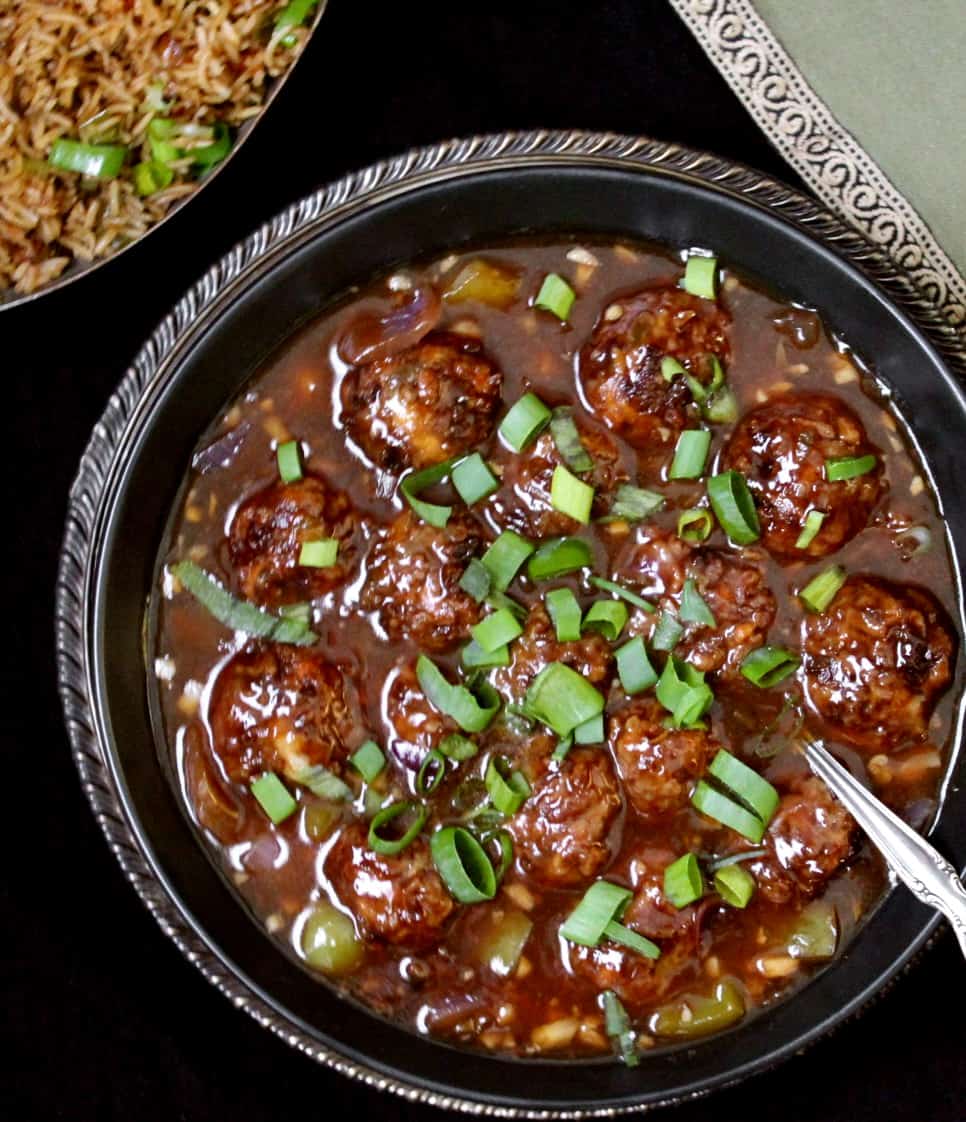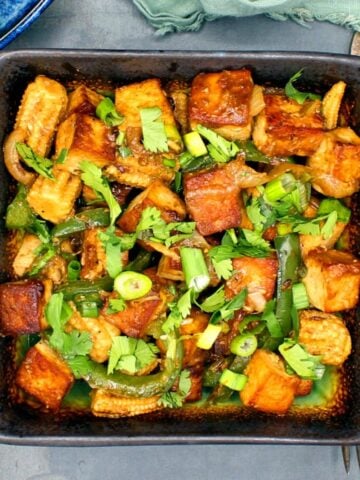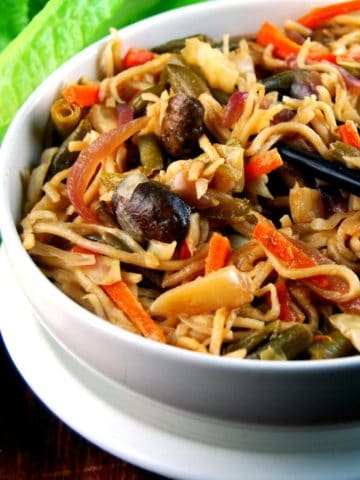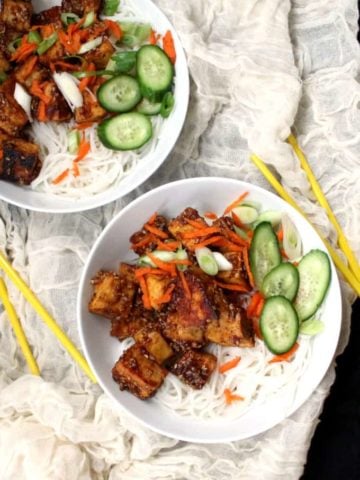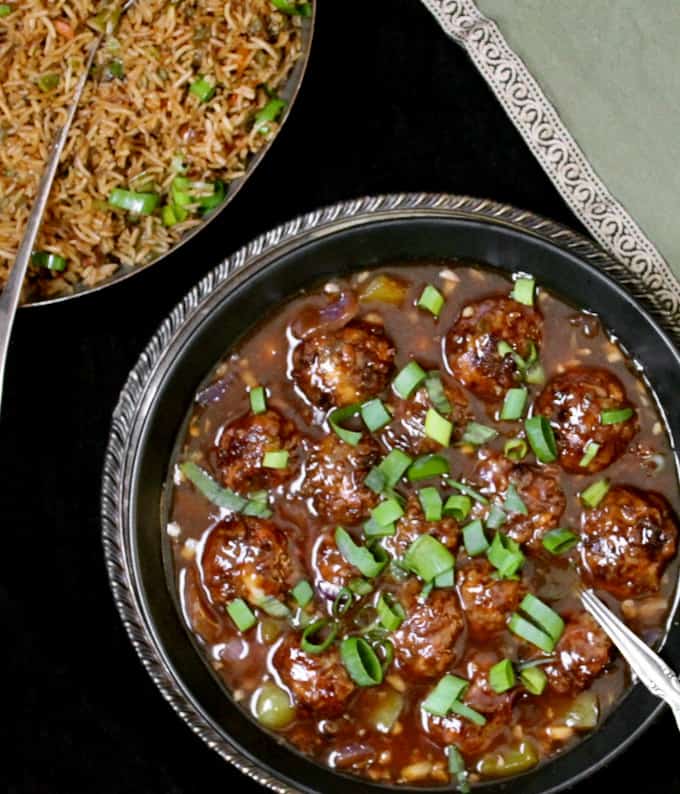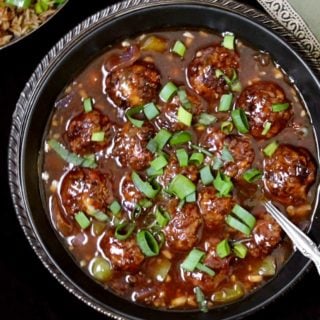Indo-Chinese food has a long history in India, and one of its most delicious chapters is doubtlessly the manchurian. This dish of vegetable dumplings in a glossy, rich-brown sauce with bold notes of tangy, sweet, spicy and salty is impossible to resist and I can honestly say I’ve never met a man, woman or child who could walk away from a plateful. In fact, if you ask an Indian what his or her favorite Indo-Chinese dish is, chances are, it would be a Veg Manchurian. Indo-Chinese cuisine arrived in India long before the country’s whole-hearted embrace of capitalism in the 1990s brought other global cuisines–and American restaurant chains–knocking at its door. It is said to have originated in Calcutta in the 19th century, when Chinese immigrants seeking work arrived in what was at the time the capital of British India. Hungry for the tastes of home, the immigrants married ingredients familiar to them–soy sauce, vinegar, noodles, cornstarch–with ingredients of their new homeland, most notably the spices, taking flavor to a whole new level in a country where flavor has always been king. In Indian dishes, sweet, sour, bitter, salty and pungent are usually balanced to merge into a common deliciousness and richness without drawing attention to their individual selves. Not so with Indo-Chinese cuisine. You could taste the salty, the sweet, the spicy and the tangy in each dish. And they did such a happy dance on your tongue that you not only didn’t mind, you wanted more. And more.
Expert tips
When making any kind of Chinese food, including Indo-Chinese, it’s imperative to have all your ingredients prepped and on hand. Although I usually like to prep as I cook, I make an exception for Chinese dishes. That’s because you cook most Chinese food at really hot temperatures, on a scorching-hot stove in a screaming-hot wok. If you haven’t prepped your ingredients beforehand, you could end up with burnt food. You can mix and match veggies for the veg manchurian, but don’t use vegetables that can get too watery, like zucchini. Cabbage is usually the leading vegetable in the manchurian balls, with carrots, green beans, bell peppers and even cauliflower added to the mix. I use cabbage, carrots and green bell peppers, which gives me the best results, and my recipe is tailored to these veggies. You need to be ready to start shaping and frying the manchurian balls as soon as you add the flour to the veggies and mix it. The longer the veggies sit, the more water they could express, and you’ll need to add more flour which could result in doughy manchurian balls. The manchurian balls are quite simply seasoned with aromatics like onions, garlic and ginger. They are flavorful but not overly so. That fantastic deep-gold-brown sauce is going to seep through them and soak them with more delicious flavor than you can ask for. The balls should be about ¾ths of an inch in diameter, and flatten them a little before you fry them. They will plump up once you add them to the sauce. You will need to deep-fry the manchurian balls, but don’t panic. If you fry them with the oil heated to 350 degrees, they won’t absorb much oil at all. You can bake the manchurian balls or even air-fry them or shallow-fry them in an abelskiver pan, but honestly, don’t. Just eat in moderation and experience them as they are meant to be eaten. A little goes a long way with this dish. For the manchurian sauce, you need a mix of sauces that may make no sense at first but will make all the sense when it all comes together. There’s tamari (or soy sauce is fine), ketchup, chili sauce, rice vinegar (or apple cider vinegar) and maple syrup, all adding layers of flavor and complexity. The maple syrup might not be a traditional ingredient, but I like the sweetness it adds to balance the flavors, and it makes the dish really, really kid-friendly–ask Jay, who polishes up half this recipe by himself each time I make it. I even add a bit of mushroom stock to the recipe when I have it on hand for more umami. I have in the recipe the proportions of the sauces I use in this dish, but they are not written in stone. You might want to tweak them slightly to your taste. If you think a little more depth and saltiness is needed, add some more tamari. If you want more tang, add another splosh of the vinegar. Go with your tastebuds and let them lead you into a delightful adventure. This recipe makes a ton of veg manchurian–enough to feed an army. I do this because no one here can have enough of it. But if you are feeding a smaller group of people, halve the recipe by all means. Use the recipe slider to adjust the proportions of ingredients (place the cursor over the number of servings to see the slider).
Serving suggestions
The perfect pairing for a Veg Manchurian is, hands-down, Veg Fried Rice, also made in the Indo-Chinese way. You can also serve the manchurian with Garlic Fried Rice or Vegan “Egg” Fried Rice. Check to get new recipe updates by email.
More vegan Indo-Chinese recipes
Recipe card
